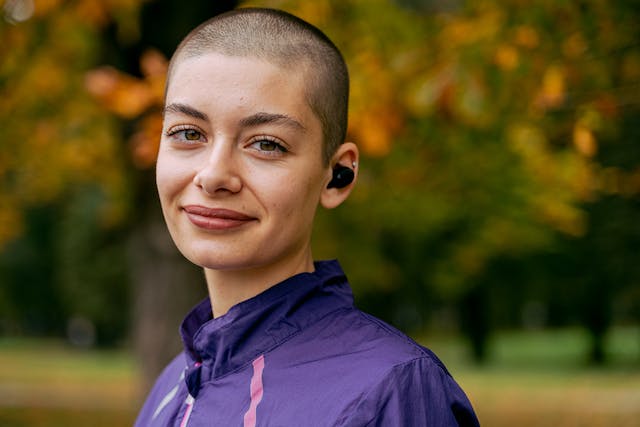
Full-Spectrum Cannabis for Chemo & radiation Side Effects
Full-spectrum cannabis continues to gain wider research attention as a potent alternative to single hemp compounds like tetrahydrocannabinol (THC) and cannabidiol (CBD). Full-spectrum cannabis comes with the plant’s full-package and studies continue to show how its combination of compounds, terpenes, and flavonoids support better human health?
But can full-spectrum cannabis help ease the side effects of chemo radiation? Science continues to seek powerful alternatives for relief from diverse side effects linked to chemo radiation.
Let’s explore the available evidence and ways to consume full-spectrum cannabis against cancer symptoms with other vital details. Managing the side effects of chemotherapy will become easier with information available in this article.
What is Chemo therapy and radiation therapy?
Chemoradiation, or chemotherapy and radiation , are treatment method mostly used against cancers in the human body. Chemotherapy involves the use of chemical agents that target cancer and aims to provide short to long-term relief from harmful growths. Chemotherapy targets cancer cells throughout the body usually by using cytotoxic medications given intravenously. Radiation therapy uses high-energy beams (like x-rays or proton therapy) to target and kill cancer cells at a specific tumor site.
Does Chemoradiation Have Side Effects?
Chemoradiation helps against cancers, but comes with its set of side effects. Common side effects of chemo-radiation include nausea, vomiting, loss of appetite, lethargy, and many more.
Can Chemotherapy and Radiation therapy Side Effects Affect Recovery?
Side effects from chemotherapy can limit the recovery speed patients experience after receiving treatment. Loss of appetite, vomiting, and other side symptoms could mean the therapy takes longer to go into effect.
Can Full-Spectrum Cannabis Help Against Chemotherapy and Radiation therapy Side Effects?
Cancer treatments like chemotherapy and radiation therapy can lead to a variety of side effects that could make the recovery process unpleasant for patients. Common symptoms that could affect how patients regain their health after chemotherapy include loss of appetite, nausea, weight loss, and other issues. Cannabinoids have found to improve quality of life of cancer patients and any such patients who are terminally ill and need hospice / pallaitive care,
_1708500407.jpg)
How Does Full-Spectrum Cannabis Work against Chemotherapy and Radiation therapy Side Effects?
Full-spectrum cannabis extracts work on the endocannabinoid system (ECS) through receptors distributed in human tissue and cells. Two main receptors – CB1 and CB2 –help maintain energy and balance at a cellular level along with activity against inflammation and other challenges that affect the human body.
Endocannabinoid receptors are found in cell membranes and comprise of G-proteins placed throughout the human body’s pain pathway. Action from the cannabis extract helps fast-track pain relief and deliver better response at a central and peripheral level to boost cell and tissue immunity.
Side effects after chemo and radiation could aim to limit appetite and cause severe stomach upsets in some cases. Full-spectrum cannabis extracts show promise in limiting these damaging side effects, helping people achieve recovery post-chemotherapy.
Major Benefits of Full-Spectrum Cannabis against Chemo - radiation Side Effects
To stimulate appetite
Full-spectrum cannabis comes with THC that can help stimulate appetite in persons experiencing the problem after chemoradiation. However, supervised use is recommended for products containing THC since the compound possesses soporific and psychoactive properties.
For pain relief
Chemo - radiation could cause a new episode of pain in some patients that require additional medical care. Inflammation is also possible in patients who undergo chemotherapy. In some cases, these pain episodes do not respond to opioid-based medicines, but subside after cannabis extracts are used according to research evidence.
Full-spectrum cannabis extracts possess THC and CBD that work on the CB1 and CB2 receptors respectively. THC acts on CB1 receptors to limit nerve damage pains while CBD works on CB2 receptors as an anti-inflammatory compound.
Prevention of nausea
Ample research evidence proves that cannabis extracts can be effective against nausea in chemotherapy patients. Findings from the studies reveal that the anti-nauseant compound in cannabis extracts is THC and not CBD. Full-spectrum extracts come with a balanced composition of THC that can help prevent nausea after chemoradiation.
Best Way(s) to Absorb Full-Spectrum Cannabis against Chemoradiation Side Effects
Inhaled or vaporized cannabis
Inhaled marijuana has been proven in a report released by the American Cancer Society to be one of the most effective against cancer symptoms and after-treatment side effects. The report also suggests that inhaled cannabis will enter the bloodstream at a faster rate than edible products.
THC in full-spectrum cannabis will not possess a higher psychoactive potential through inhalation. The report also goes further to suggest that a second psychoactive agent produced by the liver will have lower effect on the user, limiting the chances of a prolonged ‘high’ effect.
Rectal Absorption – suppositories
Rectal administration of medications offers an alternative route for drug delivery, bypassing some of the processes that occur when drugs are taken orally. This method involves inserting medications into the rectum, where they are absorbed into the bloodstream through the surrounding blood vessels. While this approach may seem unconventional, it offers several advantages over oral administration, particularly in terms of faster onset and higher bioavailability.
Key Points:
Absorption Process: When medications are administered rectally, they are absorbed primarily through the blood vessels in the rectal wall. Unlike oral ingestion, where drugs pass through the digestive system and liver before reaching systemic circulation, rectal administration partially bypasses the liver, leading to more direct absorption into the bloodstream.
Venous Drainage: The rectum's venous drainage system plays a crucial role in the absorption of rectally administered medications. Approximately two-thirds of the blood from the rectum drains into systemic circulation through the middle and inferior rectal veins, while the remaining one-third enters hepatic circulation via the superior rectal vein.
Hepatic Alteration: Drugs administered rectally typically undergo less hepatic alteration compared to oral administration, as a significant portion of the drug bypasses the liver during absorption. This results in a more pronounced effect of the drug on the body, as less of it is metabolized by hepatic enzymes.
Advantages of Rectal Administration: Rectal administration offers several advantages, including the ability to administer larger doses of medication without causing psychoactive effects. This makes it particularly useful for drugs that may have undesirable mental effects when taken orally.
Cannabinoid Absorption: Cannabinoids administered rectally can enter the bloodstream through two main routes: either directly through the middle and inferior rectal veins or via the superior rectal vein, which leads to hepatic circulation. The choice of route can impact the extent of hepatic metabolism experienced by the cannabinoids, ultimately affecting their bioavailability and potency.
Conclusion: Rectal administration provides a viable option for drug delivery, offering faster onset, higher bioavailability, and reduced hepatic alteration compared to oral administration. While this route may not be suitable for all medications, it offers distinct advantages in certain clinical scenarios, particularly for drugs like cannabinoids. Understanding the mechanisms and implications of rectal drug absorption is essential for optimizing therapeutic outcomes and ensuring patient safety
Edible cannabis
Full-spectrum cannabis for oral consumption can be used as part of baked goods, candy, medicines, drinks, and other edible items. However, THC absorbed through edible full-spectrum cannabis can take longer to process than inhaled or vaporized variants; however, it can deliver significant effects expected from other extracts.
Conclusion
Using the best full-spectrum cannabis against chemoradiation side effects promotes better relief from pain, nausea, loss of appetite, and other symptoms. Choose products made from premium-grade cannabis strains to ensure better action against multiple side effects caused by chemotherapy.
Cannabryl offers premium full-spectrum extracts made from pure Himalayan cannabis strains. The fast-acting compounds in this premium strain ensures users get the full effects of pure cannabis extracts against symptoms experienced after life-saving chemotherapy.
References
American Cancer Society (2021) Marijuana and Cancer https://www.cancer.org/cancer/managing-cancer/treatment-types/complementary-and-integrative-medicine/marijuana-and-cancer.html
Committee on the Health Effects of Marijuana: An Evidence Review and Research Agenda; Board on Population Health andPublic Health Practice; Health and Medicine Division, The Health Effects of Cannabis and Cannabinoids. Health Eff. CannabisCannabinoids. 2017;15:1
DeMarco, C. (2019) CBD Oil and Cancer: 9 Things to Know. https://www.mdanderson.org/cancerwise/cbd-oil-and-cancer--9-things-to-know.h00-159306201.html
Griffiths, C., Aikins, J., Warshal, D., and Ostrovsky, O. (2021) Can Cannabidiol Affectthe Efficacy of Chemotherapy and Epigenetic Treatments inCancer?Biomolecules. 2021 May; 11(5): 766.doi: 10.3390/biom11050766
Johnson, J. (2021) CBD for Cancer: Everything You Need to Know. https://www.medicalnewstoday.com/articles/324745
Khan M.I., Soboci A.A., Czarnecka A.M., Król M., Botta B. The Therapeutic Aspects of the Endocannabinoid System (ECS)for Cancer and their Development: From Nature to Laboratory. Curr. Pharm. Des. 2016;22:1756–1766.doi: 10.2174/1381612822666151211094901.
National Academies of Sciences, Engineering, and Medicine (2017). The health effects of cannabis and cannabinoids: the current state of evidence and recommendations for research. Washington, DC: The National Academies Press
Rahn E.J., Zvonok A.M., Thakur G.A., Khanolkar A.D., Makriyannis A., Hohmann A.G. Selective Activation of CannabinoidCB2 Receptors Suppresses Neuropathic Nociception Induced by Treatment with the Chemotherapeutic Agent Paclitaxel inRats. J. Pharmacol. Exp. Ther. 2008;327:584–591. doi: 10.1124/jpet.108.141994
Woerdenbag, H. J., Olinga, P., Kok, A. E., Brugman, D. P., van Ark, U. F., Ramcharan, S. A.,Lebbink, P. W., Hoogwater, F. J. H.,Knapen, D. G., de Groot, D. J., andNijkamp, M. W. (2023)Potential, Limitations and Risks of Cannabis-Derived Products in Cancer Treatment. Cancers (Basel). 15(7): 2119.doi: 10.3390/cancers15072119
-----------------------------------------------------------------------------------------------------------------------------------------------------------------------------------------------------------
Our content is founded upon scientific studies, ensuring reliability. Prior to considering cannabis or cannabinoids for symptom or illness management, it is strongly advised to seek guidance from a specialized medical professional. Commercial utilization of our content is strictly prohibited. Alteration, adaptation, or translation of our content requires prior consent. Downloading and utilizing our content is permitted solely for educational purposes, with appropriate accreditation. Publication of our content necessitates explicit authorization. CANNABRYL does not endorse the opinions expressed by its collaborators and writers.






